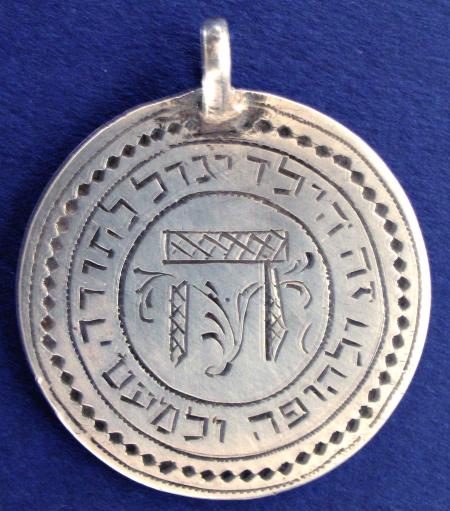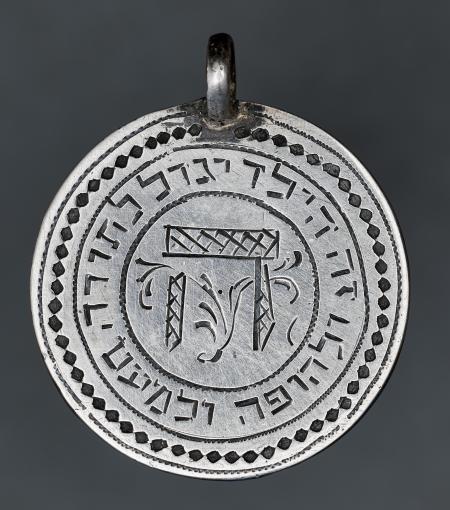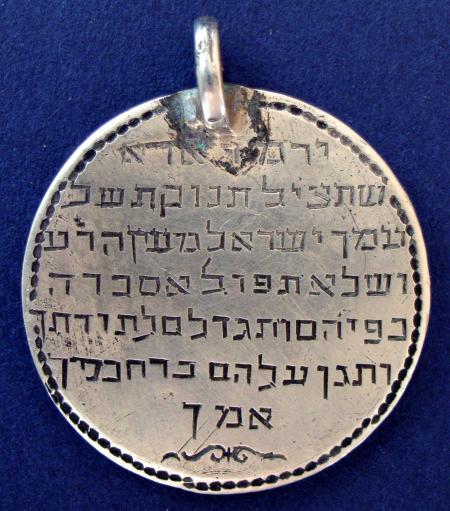Obj. ID: 36485
Sacred and Ritual Objects Amulet, Germany, circa 1850

In the centre of the amulet is a circle that has the letter ה in the middle standing for "the Lord". Around the circle there is a Hebrew inscription:
זה הילד יגדל לתורה / לחופה ומ"ט (מעשים טובים).
May this child rise to Torah/ Huppah and to good deeds.
The other side of the amulet has an inscription and it reads:
י'ר'מ'ה'א'ו'א' [=יהיה רצון מלפניך ה' אלהינו ואלהי אבותינו]
שתציל תנוקת של
עמך ישראל מעין הרע
ושלא תפול אסכרה
בפיהם ותגדלם לתורתך
ותגן עליהם ברחמיך
אמן
May it be Your will, our God and God of our ancestors
that You save children of
Your People Israel from evil eye
and from diphtheria
and raise them to Torah
and protect them with Your mercy (based on the verse from Likutei Tfilot, part 1, Prayer 28)
Amen
The following description was prepared by William Gross:
From earliest times, man has tried to protect himself from misfortune by the use of objects which he considered holy or otherwise (e.g., magically) potent. Amulets and talismans are items generally worn around the neck or wrist, carried in a pocket or purse or hung on a wall. They are meant to protect or aid those who carried or wore them. The Hebrew word for amulet, kame‘a, has the root meaning "to bind". Jewish amulets are usually comprised of texts (either letters or graphic symbols) that are inscribed on some sort of material; some may also contain plant matter or precious stones. The texts of amulets usually include holy names that are believed to have the ability to affect reality, along with incantations summoning angels or other magical powers. For the most part, an amulet has a specific purpose: to ease childbirth, facilitate recovery from illness, improve one’s livelihood, and so on, but in the modern world many are also made for general protection.
Copy of an 18th-century lead medal, Gross Family Collection 027.0***. This example is likely from the 19th century. As with "Heh" amulets in Germany, this example is probably made from a coin from which the faces have been polished away.
Inscription: "Heh" Zeh ha-Yeled Yigdal le-Torah......





